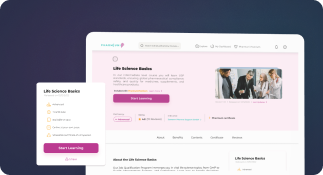Quality by Design (QbD)
Definition
Quality by Design (QbD) is a systematic, risk-based approach to pharmaceutical development that emphasizes building quality into products from the earliest stages. Rather than relying solely on end-product testing, QbD integrates quality considerations throughout the design and manufacturing process to ensure consistent product performance and regulatory compliance.
Detailed Explanation
Purpose and Importance of QbD
Quality by Design (QbD) aims to shift the pharmaceutical industry from a reactive to a proactive quality assurance model. Traditionally, quality was assessed primarily through final product testing. In contrast, QbD focuses on understanding processes, identifying potential risks, and designing controls to mitigate those risks before they impact product quality.
The key objectives of QbD include:
- Enhancing product and process understanding
- Reducing variability and improving consistency
- Facilitating regulatory flexibility and faster approvals
- Minimizing product recalls and compliance issues
- Improving patient safety and therapeutic efficacy
Core Elements of QbD
Implementing QbD in pharmaceutical development involves several critical components:
- Quality Target Product Profile (QTPP): A prospective summary of the quality characteristics of a drug product that ideally will be achieved to ensure the desired quality, safety, and efficacy.
- Critical Quality Attributes (CQAs): Physical, chemical, biological, or microbiological properties that must be controlled to ensure product quality.
- Risk Assessment: Identifying and prioritizing potential risks to quality based on scientific understanding and historical data.
- Design Space: The multidimensional combination of input variables and process parameters that have been demonstrated to provide assurance of quality.
- Control Strategy: A planned set of controls, derived from current product and process understanding, that ensures process performance and product quality.
Applications of QbD in the Pharmaceutical Industry
QbD principles are applied across various stages of drug development and manufacturing, including:
- Formulation Development: Designing dosage forms with optimized bioavailability and stability.
- Process Development: Establishing robust manufacturing processes that consistently produce high-quality products.
- Analytical Method Development: Creating analytical procedures that accurately measure critical quality attributes.
- Regulatory Submissions: Providing detailed QbD data in regulatory filings such as the Common Technical Document (CTD) to facilitate approvals.
Example of QbD in Practice
Consider the development of a controlled-release tablet. Using QbD, the development team would:
- Define the desired release profile (QTPP)
- Identify CQAs such as dissolution rate and tablet hardness
- Conduct risk assessments to determine which formulation factors most affect CQAs
- Design experiments (e.g., Design of Experiments – DoE) to optimize formulation and process parameters
- Establish a design space where variations in input materials or process conditions do not affect product quality
- Develop a control strategy to monitor and maintain product quality during manufacturing
Regulatory Context and Guidance
Global regulatory agencies strongly support the adoption of QbD. Key guidance documents include:
- International Council for Harmonisation (ICH) Q8(R2): Pharmaceutical Development
- ICH Q9: Quality Risk Management
- ICH Q10: Pharmaceutical Quality System
Regulators encourage manufacturers to use QbD to demonstrate a thorough understanding of their products and processes, which can result in more flexible regulatory oversight and expedited reviews.



